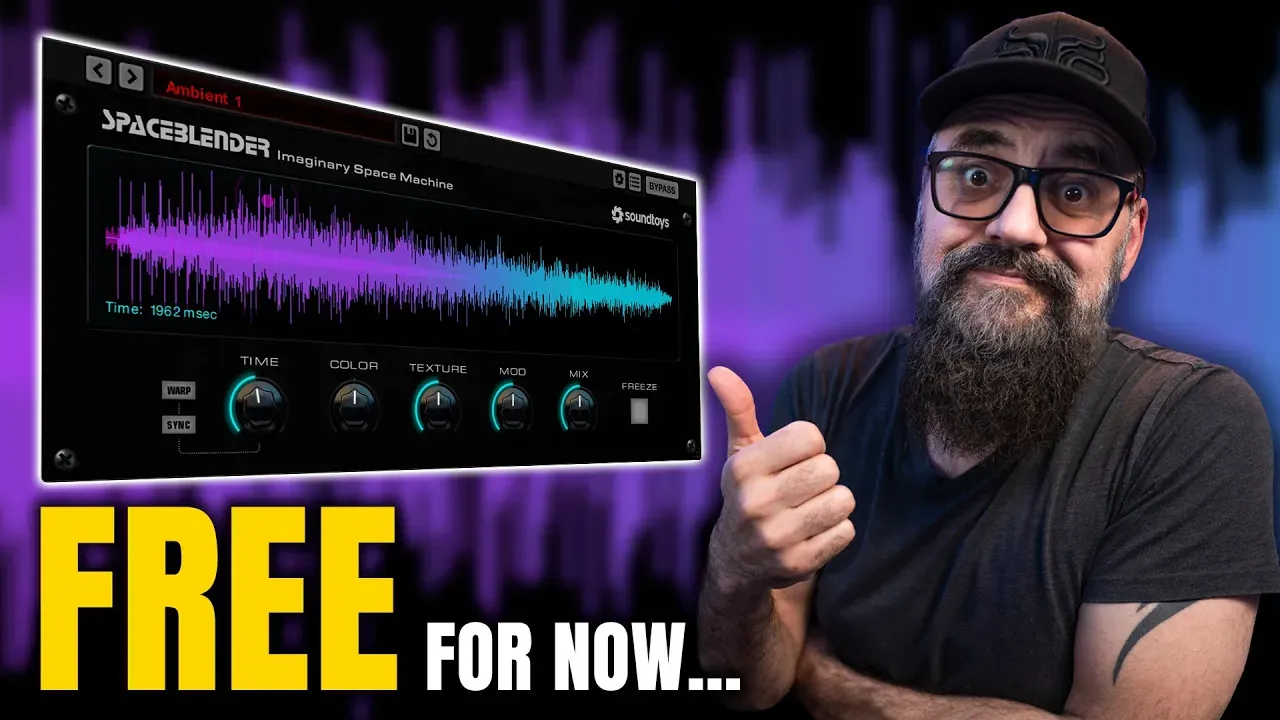
SpaceBlender by Soundtoys: A Free (for a limited time) Reverb Plugin That Thinks Outside the Box
If you’ve been mixing for a while, you probably have a folder full of reverb plugins. From plate emulations to lush halls and gritty springs—there’s no shortage of options out there.
But every once in a while, something new pops up that makes you stop and go,
“Okay… what is this thing doing?”
That’s exactly how I felt when I first saw SpaceBlender by Soundtoys.
And now, the plugin is officially out—and it’s free until May 22nd, 2025.
Let’s take a closer look at what SpaceBlender does, why it’s different from your usual reverb plugin, and how you can use it creatively in your mixes and productions.
What Is SpaceBlender?
SpaceBlender is not your traditional reverb. It’s a spatial effect plugin powered by a unique algorithm based on something called swarm synthesis.
Yeah… it sounds a bit sci-fi—but it basically means that instead of working like a typical reverb (which usually relies on delay networks or convolution), SpaceBlender uses clusters of sound “particles” to generate evolving, organic-sounding spaces.
The result?
You can create massive, otherworldly textures, tight gated-style verbs, or dreamy ambient washes with just a few tweaks.
The Visual Interface: Shaping Space in Real Time
One of the most fun features of SpaceBlender is its visualizer, which isn’t just for looks—it’s fully interactive.
At the heart of the plugin is a sonar-style cursor that lets you shape your reverb space in real time.
Move it vertically and horizontally to shift the character of the space:
-
Go from long, decaying tails to quick, gated responses
-
Create reverse-style effects or blooming textures
-
Blend in tight rooms or expansive ambient swells
Every move you make is reflected instantly in the visualizer, giving you feedback on how your sound is interacting with the space.
Key Features and Controls
Here’s a breakdown of the main controls in SpaceBlender and what they do:
-
Time – Adjusts the length of the reverb, from 100ms to 60 seconds. You can also sync it to your DAW’s tempo using beat divisions (1 to 32 beats).
-
Warp – Adds a tape-style pitch modulation effect to the tail, which reacts dynamically as you adjust the time.
-
Color – Lets you brighten or darken the space to suit your mix.
-
Texture – Controls the density and complexity of the reverb tail. Go from subtle to fully atmospheric.
-
Mod – Introduces modulation for movement and width in the space.
-
Mix & Width – Standard dry/wet blend and stereo width control. You can also lock the mix knob while browsing presets—a handy little feature.
One standout feature is the Freeze button. It captures and holds the current reverb space so you can loop it indefinitely. Great for ambient intros, transitions, or just creating experimental sound beds.
What Can You Use It On?
While SpaceBlender is technically a reverb, it’s also a powerful sound design tool.
Here are just a few ideas:
-
Vocals – Add lush, evolving tails or create throw-style effects
-
Guitars – Give clean tones a moody, ambient backdrop
-
Drums – Craft tight, gated reverb on snares or open up your room sound
-
Synths – Use Freeze and Warp for experimental textures or ambient pads
-
Sound FX – Shape cinematic atmospheres or strange audio transitions
It’s the kind of plugin that invites you to explore—not just set and forget.
Final Thoughts
There’s no shortage of reverb plugins on the market, but SpaceBlender really brings something different to the table.
It’s intuitive, fun to use, and surprisingly versatile—whether you're building huge ambient spaces or just trying to give your mix a little extra dimension.
And again—it’s free until May 22nd, 2025.
After that, you'll probably have to pay for it. So if you're reading this before the deadline, grab it now and start experimenting.
➡️ Get Soundtoys' FREE SpaceBlender Plugin while it’s FREE: https://www.soundtoys.com/product/spaceblender/
